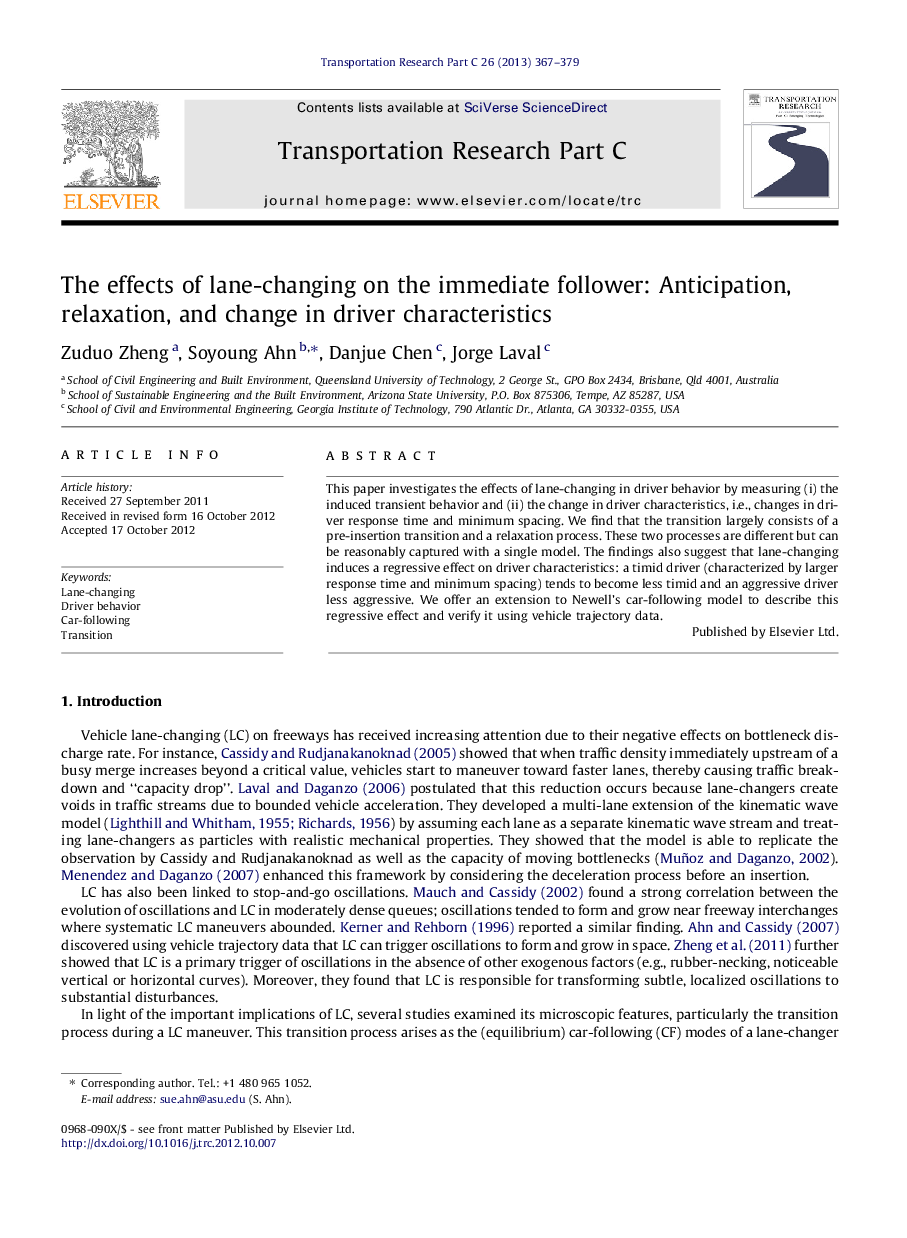| Article ID | Journal | Published Year | Pages | File Type |
|---|---|---|---|---|
| 525077 | Transportation Research Part C: Emerging Technologies | 2013 | 13 Pages |
This paper investigates the effects of lane-changing in driver behavior by measuring (i) the induced transient behavior and (ii) the change in driver characteristics, i.e., changes in driver response time and minimum spacing. We find that the transition largely consists of a pre-insertion transition and a relaxation process. These two processes are different but can be reasonably captured with a single model. The findings also suggest that lane-changing induces a regressive effect on driver characteristics: a timid driver (characterized by larger response time and minimum spacing) tends to become less timid and an aggressive driver less aggressive. We offer an extension to Newell’s car-following model to describe this regressive effect and verify it using vehicle trajectory data.
► The transition induced by lane-changing consists of two components – anticipation and relaxation. ► An existing relaxation model can reasonably describe both anticipation and relaxation processes. ► Lane-changing has a regressive effect on the follower: a timid (aggressive) driver becomes less timid (aggressive). ► A simple extension to an existing car-following model can reasonably describe the regressive effect.
